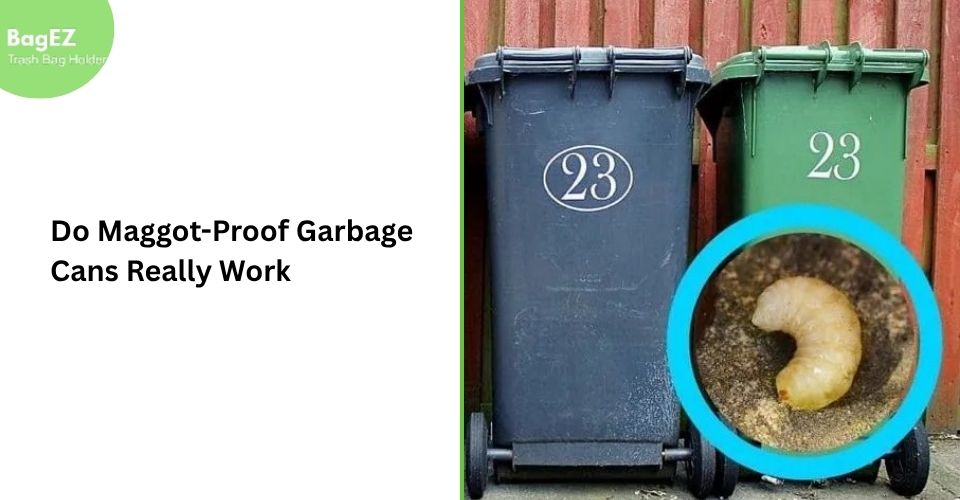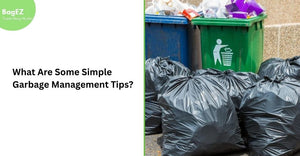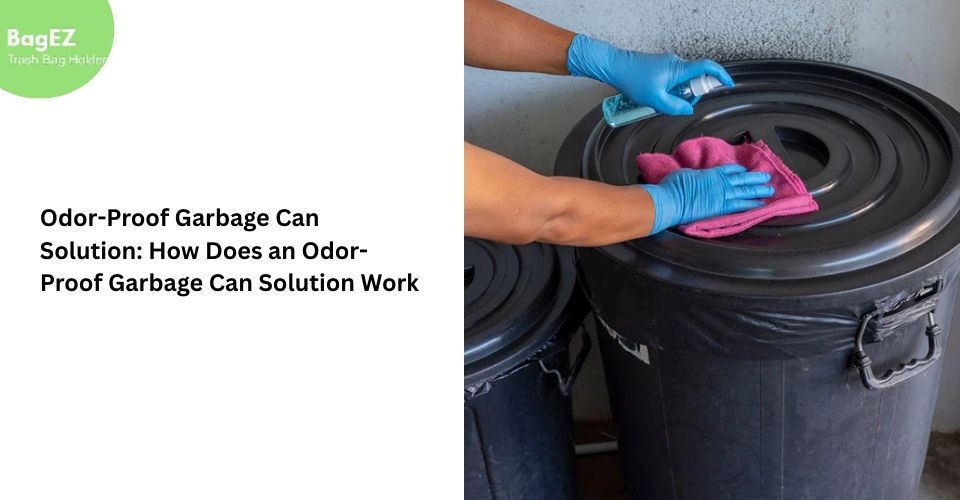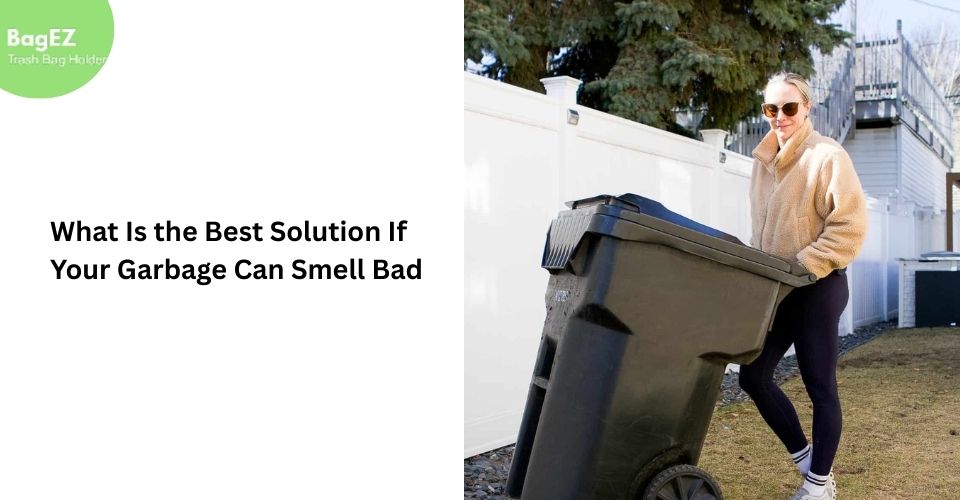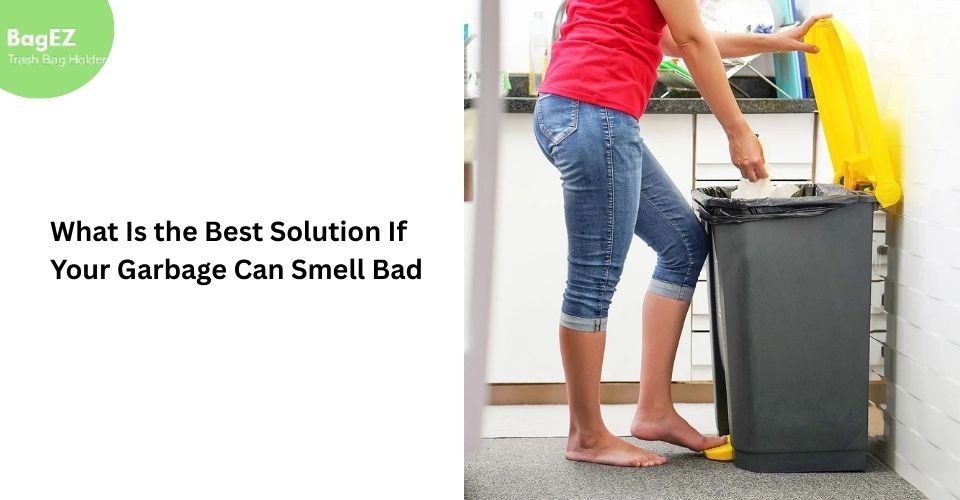Maggot-Proof Garbage Cans are a highly demanded solution to a very usual, ugly household issue, particularly in warmer seasons. The appearance of maggots in your garbage is disgusting enough, and the fact that they are in your garbage means that there is a bigger sanitation problem. However, are special maggot-proof bins the silver bullet they say they are or is the secret somewhere in good waste management practices?
The article explores the design and functionality of these special containers including the role of sanitation and prevention in ensuring that your trash is clean. We will also be able to find out what actually works in avoiding fly infestations and keeping the surrounding hygienic around your waste.
Understanding the Maggot Menace: What Attracts Flies?
It is important to know the lifecycle of a maggot before determining the effectiveness of the Maggot-Proof trash cans. The maggots are merely the larvae of flies, principally of house flies and blow flies. The fact that maggots appear is not a defect of the bin itself, but it is a sign that a fly found and deposited eggs on the appropriate food sources, which is usually rotting organic matter. The initial move to having a maggot-free environment is the removal or management of such attractants.
Flies mostly feed off an organic waste breakdown, on which they can lay eggs and where the eggs have the perfect conditions to hatch and the resulting larvae (maggots) to feed. Any garbage bin that contains the exposed meat scraps, rotting food, pet waste, or other decaying materials are all potential breeding grounds. The secret of prevention is the discontinuation of the access chain of flies.
How Flies Gain Access
-
Loose or Damaged Lids: A single opening is enough to start flies and lay eggs right on the trash.
-
Cracks and Holes: The bin structure may be damaged to offer concealed access.
-
Residue: The presence of food residue and food spills on the outer of the bin or the interior walls is an attractant even when the primary trash bag is closed. Cleaning up trash is the most important.
The Design and Efficacy of Maggot-Proof Garbage Cans

A trash can with a maggot-proof is basically a highly engineered, secure trash container. These cans will be used to fight the problem of reducing entry points and frequently adding features that make the interior environment less welcoming to larvae. Their effectiveness depends on a high level of sealing mechanisms.
Key Features of Specialized Bins
-
Airtight Sealing Mechanism: The most important feature is Airtight Sealing Mechanism. The lid must be very strong and closely-fitting to prevent the adult flies access to the eggs. It is a great improvement compared to regular loosely-fitting lids.
-
Durable, Seamless Construction: Good quality bins are constructed of smooth durable and hard plastic or metal with no seams and no cracks where flies can squeeze in or where water and food particles can build up.
-
Odor-Control Features: Specialized bins may have carbon filters or built-in insect-repellent or odor-absorbing compartments. The strong smell of rotting food is reduced and this reduces the initial attractiveness to flies seeking a breeding place.
This is crucial to good pest management.
Although a tightly closed bin would drastically decrease the chances of this happening, it is worth mentioning that in the event that the eggs are already on the food scraps when they are in the bin, maggots may still be able to hatch inside. The expression "maggot-proof" is mostly used to denote fly-proof waste storage, which helps to avoid new infestations. These cans need to be combined with active waste management to achieve the best outcomes.
Proactive Strategies for a Maggot-Free Environment
It is not sufficient to use a specialized bin only. The best solutions to maggot-proof trash cans combine the secure container and the best hygiene of trash. These preemptive measures will make sure that the content in the bin will be less likely to be a breeding ground.
1. Containment and Preparation of Waste
-
Double-Bag Organic Waste: Small, sealed bags (such as Ziploc bags or tightly knotted plastic bags) should be used to put meat, fish, pet waste, and strong-smelling food scraps before putting them in the main trash bag. This physically separates the attractant.
-
Drain and Dry: Food waste should be drained off. Maggots grow well in humid surroundings. Before bagging, food scraps can be wrapped in old newspaper which absorbs leftover moisture.
-
Immediate Disposal: Spoiled meat is very attractive garbage that should not be left lying in the kitchen. Pack it well and transfer it to the outdoor bin as early as possible.
2. Maintaining Trash Can Cleanliness
-
Regular Cleaning: The best bin should be washed frequently, in particular, when the bags are leaking. The interior can be sanitized with a bleach or vinegar solution mixed with water and the flies removed. This is an essential part of a sanitary waste management.
-
Sprinkle a Repellent: When the bin is clean and dry, some sprinkle the inside of the bottom of the empty bin (not on exposed waste) with a layer of salt, diatomaceous earth, or borax to absorb moisture and prevent any emerging larvae.
Why Choose BagEZ: A Simple Solution for Immediate Containment
Although Maggot-Proof Garbage Cans are an excellent way of storing waste that can be accessed long-term outdoors, the initial defense against the maggots is the proper, immediate waste containment. BagEZ trash bag holder is a small, strong, and versatile device that simplifies and makes it easier to hold attractive waste in an easy and convenient way, particularly during outdoor activities or to store temporarily.
BagEZ can help maintain your space tidy and clean with a hanging system that fits any bag size
and does not occupy any floor space. It is an easy garbage disposal tool when going camping, partying or even during litter cleaning. This is important: its two-fold purpose is to remain open to dispose of waste quickly and, but most importantly, to keep bags closed to minimize odors, flies, and conceal trash. With the ability to seal trash bags conveniently, immediately, and securely, BagEZ prevents flies gaining access to the waste at all, and thereby avoids maggots.
Conclusion:
The question of "Do Maggot-Proof Garbage Cans really work?" can be answered with a qualified "Yes, when used correctly." These cans are better preserved due to tight seals and smooth construction providing flies with no access to the cans and thus they are very useful in holding waste without being infested by flies. Nevertheless, their efficiency is optimized when combined with a proper use of sanitary waste management techniques: attractive waste should be sealed and firmly shut prior to disposal, the can should be clean at all times. To easily and conveniently manage waste by utilizing this plan, the BagEZ trash bag holder will offer a low-cost and convenient method of handling and storing waste in any temporary or outdoor environment, which will go a long way to making the environment a cleaner and maggot-free place.
Frequently Asked Questions (FAQs)
1) How do I prevent maggots in my trashcan?
The primary approach is prevention: it is necessary to place all food and organic waste, in particular, the scraps of meat in a separate small bag and then place them inside the main trash, and it is necessary to make sure that the lid on a trash can is always closed to ensure that flies do not have access to it.
2) What attracts flies to garbage cans in the first place?
The smell of rotting food and organic waste is the most favored by flies as it is a good indication that the flies will have an appropriate and wet environment to lay eggs.
3) What kills maggots instantly, and are there any natural remedies?
The best and immediate killer is boiling water that is sprayed on the maggots. To make a natural remedy, they can be dehydrated and killed by putting an equal amount of white vinegar and water or spicing it with a good deal of salt or lime.
4) Besides a sealed lid, what other practices can prevent maggots?
Wash and dry your trashcan with a bleach or vinegar solution on a regular basis, bag strong-smelling garbage twice and wrap wet food scraps in newspaper to help dry up the inside of the bin.

